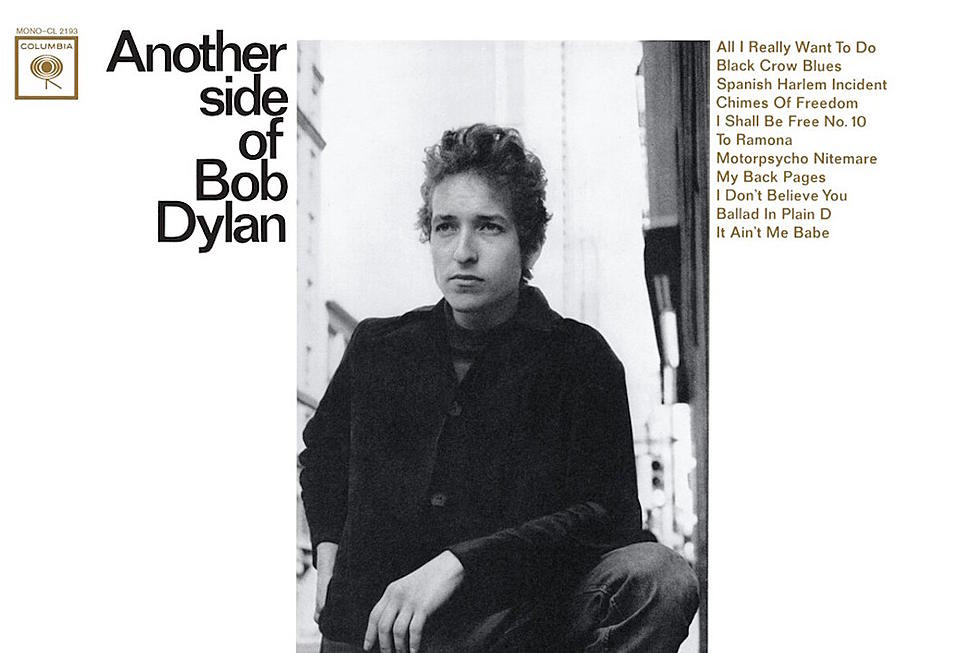
60 Years Ago: ‘Another Side of Bob Dylan’ Turns a Page
Another Side of Bob Dylan may not be his most heralded or his bestselling album, but it’s possibly his most important. Released on Aug. 8, 1964, this was Bob Dylan's fourth record – and third of all-original material.
All the songs were recorded in one session, at New York’s Columbia Studios on June 9, 1964. While the music followed the same format as his previous efforts, Dylan accompanying himself on acoustic guitar and harmonica (with piano on "Black Crow Blues"), the lyrics showed the new directions in which Dylan was moving.
Of the 11 songs on Another Side of Bob Dylan, only "Chimes of Freedom" contained the combination of poetry and social commentary that led to him being called the voice of his generation. In fact, "My Back Pages," with its refrain of "I was so much older then / I’m younger than that now,” reflected that he had been taking things too seriously – and that it maybe it was time to move on.
READ MORE: The Best Song From Every Bob Dylan Album
Bob Dylan hadn’t fully abandoned protest songs, though; he simply changed his tone and his focus. The civil rights anthems and anti-war songs of his previous records were replaced by a lighter, more comedic touch. "I Shall Be Free No. 10" and "Motorpsycho Nitemare" were both talking blues that took playful, sardonic digs at his fame and the increasing paranoia of mainstream America towards the rising counter-culture.
It was the other tracks that raised questions among the coffee-house set. He had written his share of relationship songs before — namely "Don’t Think Twice, It’s Alright" on Freewheelin’ Bob Dylan and "Boots of Spanish Leather" on The Times They Are A-Changin’ — but now he was exploring that angle in greater numbers.
Listen to Bob Dylan's 'It Ain't Me Babe'
How the Influence of 'Another Side' Spread
Even though Dylan delivered an album of mostly love songs, that doesn’t mean that he had become a pie-eyed “moon / June” balladeer. "All I Really Want to Do" and "It Ain’t Me, Babe" — the opener and closer, respectively — showed the narrator defining himself by what he isn’t rather than was he is. This style, which could be traced back to the line “I is another” by Arthur Rimbaud, Dylan’s favorite poet, would soon be picked up by Pete Townshend on songs like "Substitute" and "I’m a Boy," who has cited Another Side as an influence.
"Spanish Harlem Incident" and "To Ramona" found his poetic instincts ideally suited to love songs, but "I Don’t Believe You (She Acts Like We Never Have Met)" is about as close to a pure pop song as Bob Dylan was capable of writing at the time. On the flip side, the eight-minute "Ballad in Plain D" was a largely autobiographical tale of the night he broke up with Suze Rotolo, the woman on the cover of Freewheelin’.
Three songs from Another Side of Bob Dylan ("Spanish Harlem Incident," "All I Really Want to Do" and "Chimes of Freedom") were covered by the Byrds on their 1965 debut – an album named after another song Dylan recorded, but didn’t release, at that same session, "Mr. Tambourine Man." The Byrds would also tackle "My Back Pages" two years later. Meanwhile, the Turtles had their commercial breakthrough by placing "It Ain’t Me, Babe" in the Top 10.
And that’s why the album is so important in Dylan’s catalog. With Another Side, Bob Dylan had invented folk-rock; he simply had yet to add the second half of that equation. He would do that soon enough.
Bob Dylan 'Bootleg Series' Albums Ranked
Gallery Credit: Michael Gallucci
How an Unlikely Collaboration With Bob Dylan Changed Michael Bolton
More From Ultimate Classic Rock









